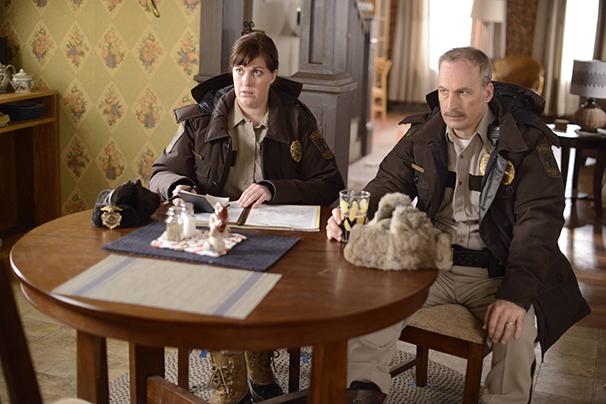
Adaptations of beloved works are often burdened by high expectations. The case is no different with “Fargo.” Inspired by the Coen brothers’ film, the new FX series of the same name wisely avoids copying the story and characters of the film. The television anthology delivers a fresh set of Minnesotans but embodies the same quirky tone, dark humor and penchant for gruesome murders as the movie.
In the first episode, “The Crocodile’s Dilemma,” “Fargo” introduces drifter Lorne Malvo (Billy Bob Thornton), but it is the meek Lester Nygaard (Martin Freeman) who takes center stage. Nygaard is berated by his wife, fails miserably at his salesman job and loses a fight to his high school bully, Sam Hess, without the man ever hitting him. Nygaard is hopelessly inept, but Freeman brings a sweet likability to him that saves the character from existing simply as a mockery.
When Nygaard runs into Malvo at the hospital, his life in Bemidji, Minn., is disrupted in horrific fashion. Malvo’s arrival signals the start of a string of peculiar murders, and Thornton plays the reserved yet calculated killer with an amusing, nonchalant attitude. As Nygaard and Malvo continue to interact, Nygaard’s life spirals out of control and, by the end of the pilot, he is left in a much darker state.
A terrific ensemble cast surrounds “Fargo’s” two leads, and their work gives the show a real weight. Tragedy befalls a few characters even before the first episode ends, but the cast members — and all of their wonderful Minnesotan accents — bring humanity and heart to the dark proceedings.
Some of the cast has not appeared yet, and others show up only briefly, including policeman Gus Grimly (Colin Hanks), who has a late-episode run-in with Malvo. While it is difficult to say how the ebb and flow of characters will impact the show, the current cast is uniformly thrilling to watch.
Paramount to the show’s success is the world these characters inhabit. Director Adam Bernstein captures the desolate winter and quaint nature of Bemidji with impeccable ease.
Much of the show’s tension develops from Bernstein’s use of still shots, which imbue the sparse indoor and outdoor locations with an eerie and peculiar feel. Slow panning and zooming of the camera bring characters and objects in and out of focus, establishing a unique visual language for the show that eschews any handheld, shaky cam feel. “Fargo” is as fun to watch for its visuals as it is for the performances.
“Dilemma” ends in an intense final act that forever changes Nygaard’s life and sets the show in a fascinating direction. The episode’s events pay off in the first hour, but smartly leave enough threads hanging to build anticipation. If the show can continue with its strong performances, incredible visual style and macabre comedy, there might just be a few awards in the series’ future.
A version of this article appeared in the Tuesday, April 15 print edition. Jonathon Dornbush is an editor-at-large. Email him at [email protected].

























































































































































